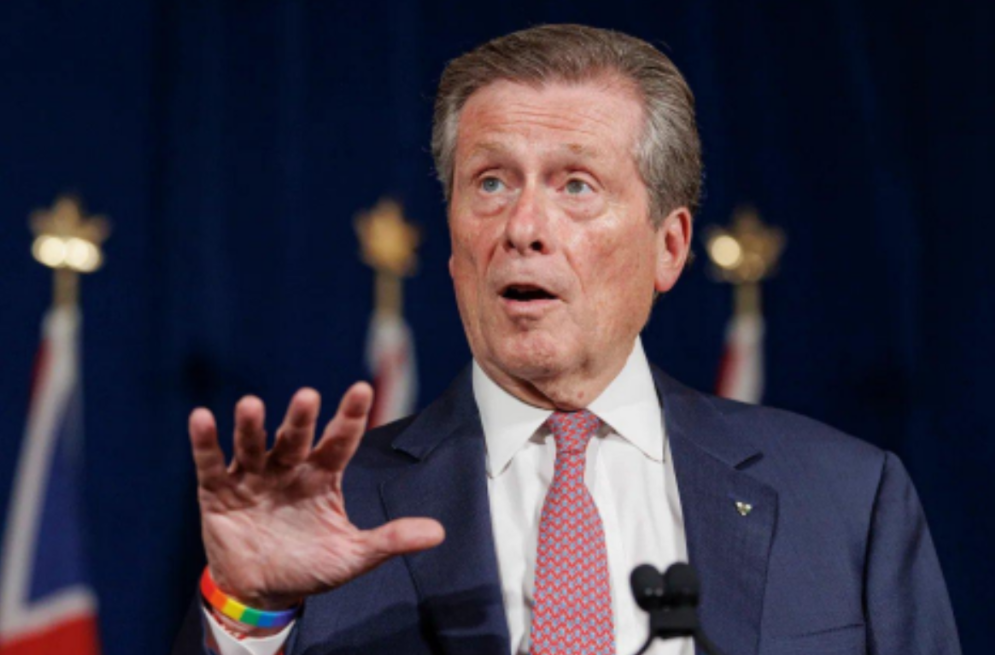John Tory is Out as Mayor of Toronto. What Happened, and What’s Next?
I remember reading the headline like it was yesterday: “John Tory to step down as mayor after admitting to relationship with former staffer.” As a frequent follower of local politics, I was stunned on February 10 when this report hit the newswire. Tory’s time as mayor of Toronto had largely been devoid of drama, especially relative to Toronto’s Rob Ford era. In fact, Tory had recently begun his third term as mayor, while still enjoying the support of most Torontonians.
Looking into the details of the affair, the public now knows that Tory, 68, had a relationship during the pandemic with a 31-year-old advisor while married to his wife of over 44 years, Barbara Hackett. While the age gap and the adultery are themselves notable, the fact that Tory was the woman’s superior raised many ethical questions surrounding potential abuse of power. By the time the affair became public knowledge, the woman in question was no longer employed at City Hall.
As mayor of Toronto, Tory certainly did well appealing to the masses, learning from his previous missteps and election losses as the leader of the Progressive Conservative Party of Ontario. He supported traditionally progressive causes, such as affordable childcare, expansion of public transit, cycling infrastructure, and public housing, while also appealing to conservative voters with his low property taxes, willingness to outsource city services, and desire to limit bureaucracy in government processes. While Tory came across as centrist with his platforms and policies, he was often characterized in the press as a “moderate conservative.”
This raises the question: how did Canada’s largest city end up with not only a conservative mayor but a popular conservative mayor? In political circles, cities are often characterized as liberal strongholds; with a combination of young voters, lower-income voters, and more obvious inequality, dense cities usually favour liberal agendas and politicians.
Toronto’s swing towards conservatism began in the late 1990s during the premiership of Progressive Conservative leader Mike Harris. In 1998, despite overwhelming opposition to his plan, Mike Harris pushed through the amalgamation of Toronto and “The 6ix” was born. The so-called “Megacity” plan combined Toronto, Etobicoke, Scarborough, York, East York, and North York into one new city; what we now think of as Toronto. These six separate cities became one, and politics in Toronto would never be the same.
Etobicoke, Scarborough, York, East York, and North York are fundamentally different from what is now known as “Old Toronto.” While “Old Toronto” (the downtown core) is densely populated, has higher public transit provision, and is home to more young people, the remaining five boroughs are more suburban, spread out, and home to more families. The fact is that Mike Harris’s amalgamation effectively amounted to gerrymandering; by combining the liberal downtown with hundreds of square kilometers of the surrounding largely conservative suburbia, Canada’s most important city shifted politically to the right. Amalgamation is even to blame for Rob Ford; results from his election in 2010 showed that voter preferences were almost perfectly divided along borough lines, with the suburbs supporting Ford, while downtown strongly preferred his main rival George Smitherman.
Currently, the outsized influence of conservative politics is evident in how John Tory was able to pass his 2023 city budget. The budget includes, among other things, an increase to the Toronto Police budget, cuts to transit service, and $2 billion for repairs to the aging Gardiner Expressway, a decrepit eyesore mostly used by suburbanites, not downtown residents. The real kicker? The budget was passed after Tory admitted to his affair and promised to resign. Based on this awkward timing, my initial suspicion when this story broke was that Tory had no intention of making this affair public, but rather someone was onto him, and he decided to get out in front of it. Turns out I was right; the Toronto Star was tipped off all the way back in December that Tory’s marriage was potentially in trouble.
In any event, what’s done is done. Toronto’s political past may be fraught with scandal and manipulation, but its future remains wide open. The by-election to replace Tory has been set for June 26th, and true to form, the provincial government is already meddling, with premier Doug Ford saying “If a left-wing mayor gets in there, we’re toast. I’ll tell you, it’d be a disaster”. As a city, we can’t keep letting our fate be decided for us, and that’s why this by-election is so important. There are already a few likely candidates, and I encourage you to research their platforms to find the one that speaks most to you. As young residents of Toronto, we’re the ones who get to decide how our city will continue to change, evolve, and thrive. It all starts with one simple act: voting.
